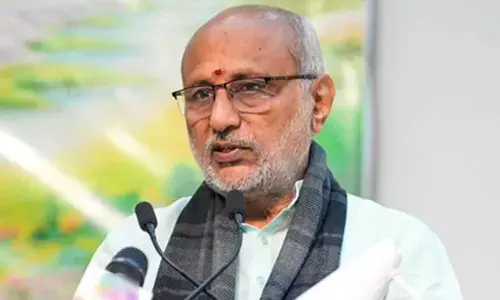The beginning of journey to Smart City

The Beginning of Journey to Smart City. Like it or not, technology is becoming an ever-bigger part of our lives. Even self-professed technophobes are now embracing the benefits of smartphones, satnavs, and smart TVs.
Like it or not, technology is becoming an ever-bigger part of our lives. Even self-professed technophobes are now embracing the benefits of smartphones, satnavs, and smart TVs.
Cities are not immune from this, nor do they want to be. We are promised that “smart cities” will be more liveable, more economically prosperous, and more efficient. It will be digital technology that underpins the workings of these cities. This presents cities with many exciting opportunities, but also a daunting question: “Where do we start?”
This is the question I will be answering in this article. After all, cities don’t want to end up wasting a lot of time and money on a new system that ends up being a novelty rather than a necessity. But first, we should look at the ideas that underpin this movement.
The concept of “smart cities”
The smart cities concept emerged in academic literature during the 2000s. It grew out of increasing concern that the current model for planning cities, which developed during the Industrial Revolution of the 1800s, is now not fit for 21st century needs.
The world’s cities have been designed around centralized networks in areas such as water, energy, and transport. That was suitable in 1800, when there were fewer than a billion people in the world, of whom 3 percent lived in cities.
Today, it is a different story. There are more than 7 billion people in the world, of whom around 50 percent live in cities. By 2050, this is expected to grow to 9 billion, and cities are projected to account for nearly 90 percent of that growth. The world is experiencing both major population growth and significant urbanization. Cities are crowded, and centralized networks are under strain.
The creation of smart cities is seen as a way to address today’s problems using different urban planning models and more sophisticated technology. In Asia and the Middle East, the focus is on building completely new cities. In Europe and North America, the focus is on the smart redevelopment of existing cities, such as London and New York.
What makes a city “smart”?
There is no universally accepted definition of “smart cities,” although the Massachusetts Institute of Technology (MIT) and the European Union have both tried to formulate one. Broadly, smart cities are defined as ones that should perform well in the following areas.
Thriving economy: This includes looking at how innovative a city is, how flexible its labor market is, how productive it is, and how it performs on the world stage.

Well developed networks: This considers networks including technology, energy, and transport. A smart city will have well developed and secure ICT networks; intelligent energy networks, including local energy grids and smart metering; and sophisticated transport networks, including public and private transport. These are key to how smart cities operate on a day-to-day basis.
High living standards: These include provision of cultural, educational, housing, and healthcare facilities, as well how safe a city is for its residents.
Attractive environment: This looks at how attractive a city is, how it sustainably manages resources, and how it protects the environment and reduces pollution.
Good governance: Residents should be able to participate in political decision-making, be offered a range of political views, and receive reliable public services.
Well rounded inhabitants: This takes into account inhabitants’ education, skills, and their participation in public life, as well as social and ethnic diversity.
However, they will need two things to make schemes happen: 1) the support of learned, knowledgeable and well informed Technical Specialists instead of General Administrators ; and 2) funding.
Five ways to get smarter
The term “smart cities” takes in such a broad range of concepts that it would be impossible to sum up all possible options here. However, here are some starting points.
Use your existing data better: If you want to make your city smarter, one of the first steps is to use existing data to understand what is going on in it. Look at the two examples below and think about how you could use your city’s data in similar ways, whether to monitor traffic flows, pollution, and garbage collections, or to optimize irrigation in parks. Smart cities rely on data, so think of what your city’s problems are and how data could help solve them.
Rio de Janeiro: In 2010, there was a series of floods and mudslides in this city that killed more than 100 people. In response, Rio de Janeiro’s mayor, Eduardo Paes, asked IBM to develop a system to enable the city to predict public safety problems, including natural disasters. The hope is to use data to make the city safer ahead of the World Cup in 2014 and the Olympics in 2016.
Rio’s Operations Center opened in 2010. It pulls in data from 30 agencies and applies mathematical algorithms to understand how weather patterns interact with Rio’s geography. By using historic data, it can predict where problems will occur, and deploy police, fire, and rescue teams to these areas.
It also sets off sirens in at-risk regions, based on the predicted amount of rain in a given area, and informs different departments so they can prepare accordingly. With extreme weather as a result of climate change, such systems could be vital.
Boston: Boston serves as a great example of a city that has learned to gather important data through citizens’ smartphones. For example, to help solve a problem of potholes in the roads, the city’s office of New Urban Mechanics has created and deployed a smartphone app called Street Bump. When volunteers who have download the app drive over a pothole, their smartphones register the bump through the device’s accelerometer, and the device’s GPS logs the location of the pothole. That data gets sent to a server for analysis, and from there action can be taken to fix it.
Work with businesses: Businesses are often keen to help trial initiatives, as they may end up gaining the benefits of cutting-edge of technology. It is much easier to work with businesses than to enforce new technology on them.
Amsterdam is one smart city successfully trialing initiatives with business. On its Utrechtsestraat shopping street, for example, it is partnering with 40 shop and restaurant owners to make the street more environmentally friendly. In doing so, it has found initiatives that businesses and public authorities can adopt.
Things that business owners can do include:
- Energy audits: Assessing how much energy their buildings and business operations use. This encourages them to reduce use of lights and heating or cooling systems, which saves money and helps the city cut emissions.
- Installing smart meters and energy displays: Smart meters help them to monitor energy use, and energy displays make the data publicly visible. These displays can also offer personalized energy-saving tips.
- Using Smart Plugs: These can dim or shut down unused appliances.
Things that public officials can do include…
- Low-energy public lighting: Using energy-saving bulbs can cut energy use, as can systems that dim lights during quiet times at night.
- Installing high-tech bins: Amsterdam has trialed BigBelly bins which have built-in solar-powered waste compactors. These bins are emptied five times less frequently, saving carbon emissions from the waste trucks. The city has also switched to electric vehicles for waste collection.
All sections of the society – public authorities, businesses, and individuals – need to have input if a city is going to become truly smart. Gaining support of all of these groups will make it much easier to enact smart city concepts.
Enable flexible working: People are working more flexibly than ever before, thanks to smartphones, tablet computers, and laptops. Linda Chandler, Microsoft UK enterprise architect, and Philip Ross, CEO at work consultancy UnWork.com, look at how this can change cities in a paper called “The Anywhere Working City”.
In this paper, they advocate the development of more “third-space” locations. These are places where people can go to work instead of staying at home or commuting to the office. City centers already have cafes with free WiFi, but this could be further rolled out to public buildings, or cities could include specific third-space buildings.
They also argue that cities should rethink the way they plan suburbs. They point to a study by service office provider Regus in May 2011 that said only 12.3 percent of people prefer working at home, while 63.5 percent would favor working in a place with a commute of less than 20 minutes a day.
Therefore, they say planners should plan for third-space buildings in suburbs, so people can work away from home without the long daily commute. This will make your area smarter and more attractive to potential residents. It will also help local businesses, as these people will be in your area longer, spending their money.
Make energy grid changes: Smart cities aim to increasingly move away from central networks, which come under greater threat from growing populations and dwindling natural energy resources.
Many cities are looking at energy networks, including Yokohama in Japan, which is trialing a scheme to include widespread take-up of solar panels by residents; and Masdar in the United Arab Emirates, a new city built around green energy.
A particularly good example of a city overhauling its current energy network is Malaga, Spain. This city is partaking in the EU’s 20-20-20 Plan, which aims to improve energy efficiency and reduce carbon emissions by 20 percent, while making renewable energy sources 20 percent of the total energy mix.
The plan proposes a series of measures to help achieve this, including:
- More energy from renewable sources: Encouraging installation of renewable energy generation technology by homeowners and business owners. This helps to decrease the grid’s reliance on traditional sources and makes it greener.
- Encourage consumer-led changes: This involves energy audits and smart meters so consumers know their energy use; energy education programs; and demand-side management programs, which involve using financial incentives and education to encourage consumers to use less energy at peak times.
- Make the network’s own operations more efficient: This includes using online energy management technology to automate more of the grid’s processes, and employing more efficient energy storage systems so the grid runs more smoothly.
Cities cannot become smart energy users without buy-in from consumers, so engaging with people while making network upgrades is vital.
Upgrade security systems: One area where many cities have been gathering data for many years is security, with CCTV cameras used to aid police. However, these systems are still reliant on having a human being watching monitors.
In smart cities, these security systems will be analyzed more by computer systems than by human viewers.
For example, the San Francisco Municipal Transport Authority has commissioned a high-tech surveillance system that uses so-called “behavioral recognition” technology.
This technology can analyze video images from an array of cameras, to monitor and store passenger behavior patterns, and send alerts if it spots anything out of the ordinary.
This is undoubtedly a sensitive area, as citizens will be concerned about a state where they are monitored all the time. However, with restrictions on how the data is used, people may come to accept it. The onus is on cities to show how it cuts crime or increases conviction rates.
In conclusion
You could end up spending an awful lot of time and money on “smart” initiatives that don’t make your city smarter at all.
For beginners, the focus should be on keeping it simple: Think of the problems that are specific to your city, and find ways to use existing data and technology to solve those problems. Local businesses and residents should be more than happy to help you solve a problem with how their city works: After all, a more useable city benefits everyone.















